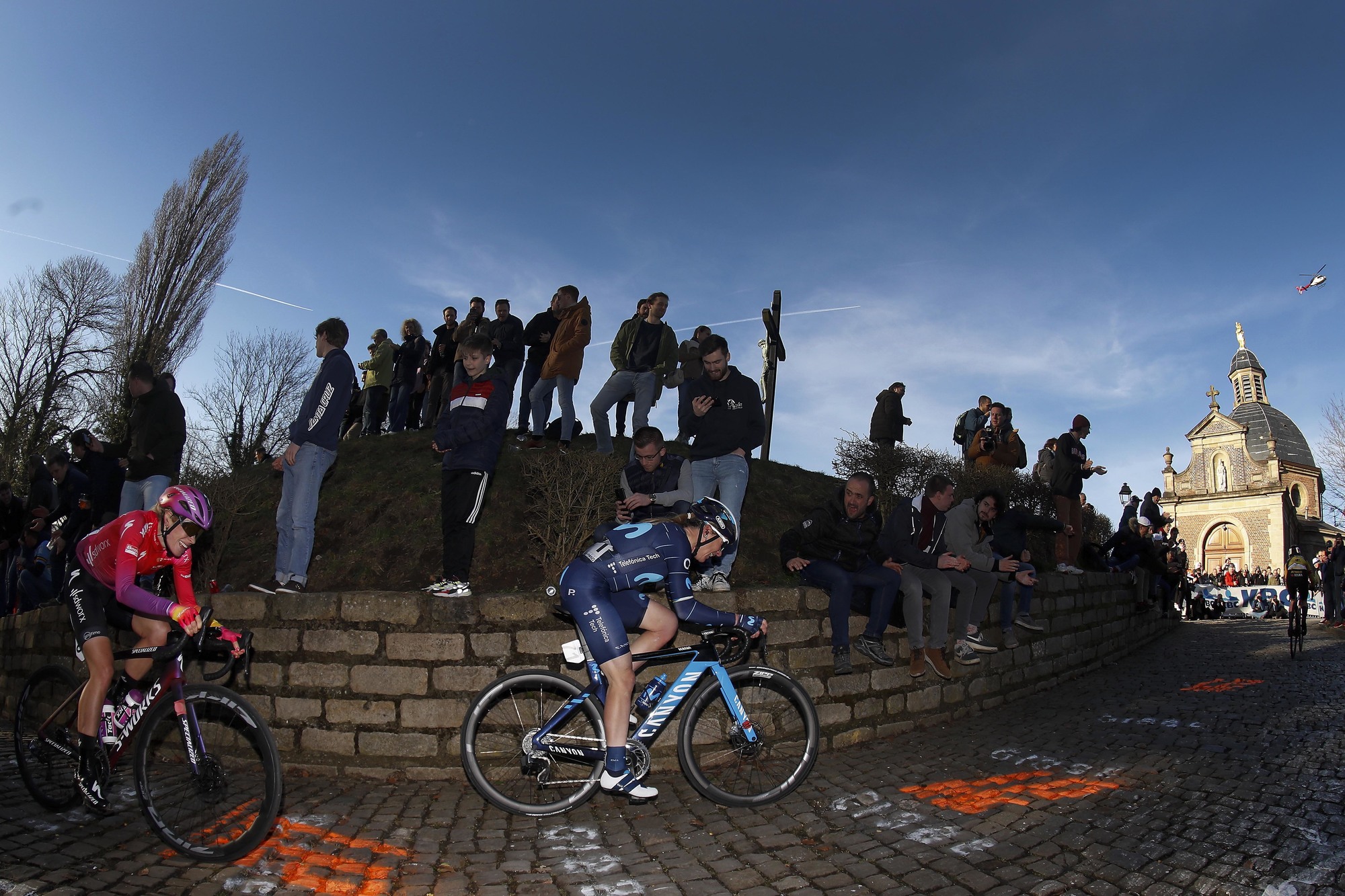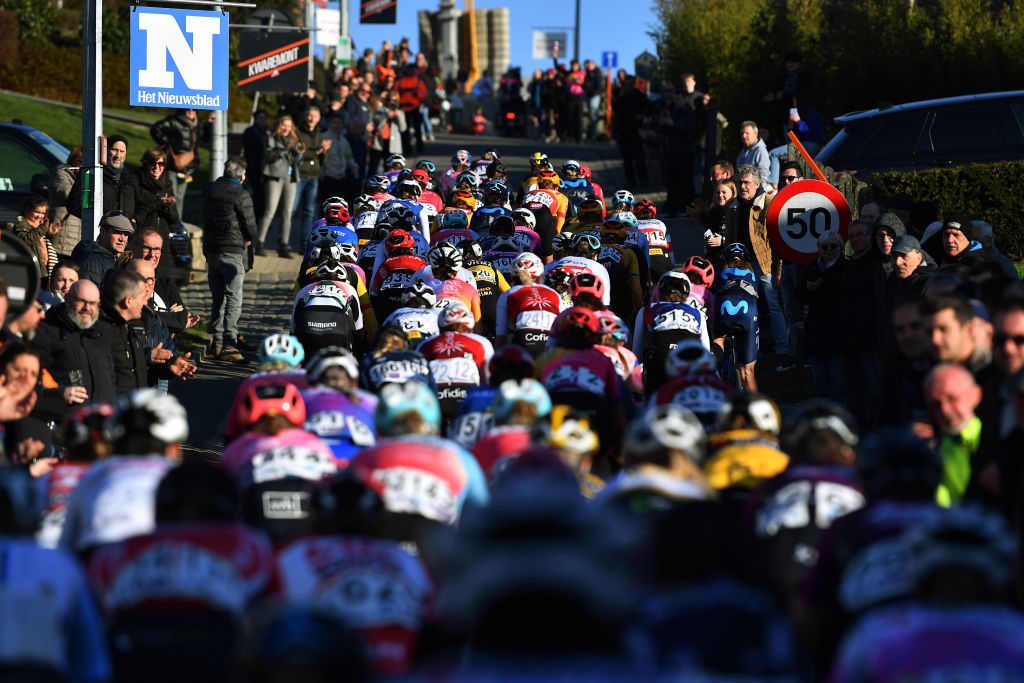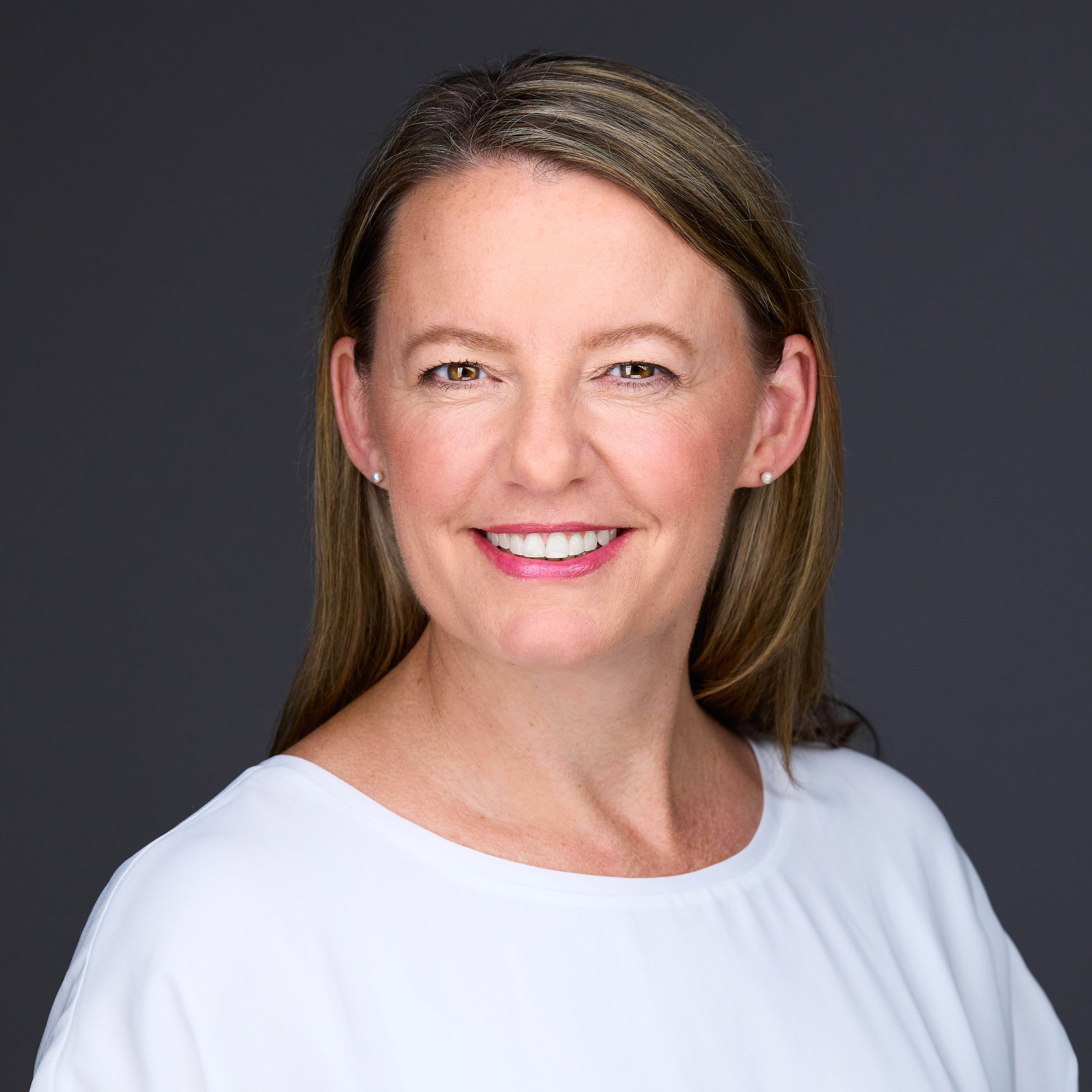Inside Flanders Classics' bold plan for women's equality: Closing the Gap
Cyclingnews speaks with CEO Tomas Van Den Spiegel about creating visibility, parity, and changing attitudes in pro racing

Flanders Classics has made a promise to women's cycling through its well-known four-year initiative, Closing the Gap, that aims to bring visibility and equality to its events from the bottom up.
The organisation is among the most progressive in professional cycling, led by CEO Tomas Van Den Spiegel, who oversees six of the most popular Spring Classics; Omloop Het Nieuwsblad, Gent-Wevelgem, Dwars door Vlaanderen, Tour of Flanders, Scheldeprijs and Brabantse Pijl.
Closing the Gap is currently in its third year of a four-year strategy, an initiative launched through Flanders Classics in partnership with KPMG, that aims to create equality across all six women's and men's Spring Classics in three main areas: live TV coverage, classification on the international calendar and prize money.
In an interview with Cyclingnews, Van Den Spiegel says that Flanders Classics initiative is well on its way to closing the gaps of inequality in pro cycling, at least for its own events, while inspiring many other cycling event promoters to create their own steps to develop women's cycling.
Cyclingnews: We're back at the Spring Classics at Omloop Het Nieuwsblad, in its third year on the Pro Series, a benefit of Closing the Gap, an initiative Flanders Classics created in 2019. Could you speak about its primary objective?
Tomas Van Den Spiegel: The first step was to increase TV coverage. The second was to increase the categories of the races. We have now two WorldTour races [Gent-Wevelgem and Tour of Flanders] and three [1.Pro – Omloop Het Nieuwsblad, Dwars door Vlaanderen and Brabantse Pijl], but once you increase the categories from 1.1 to 1.Pro, it means more start money for the teams. Basically, we said we want to be able to pay the teams more start money.
The third thing was to make the women’s courses as closes to the men’s courses as we could, for example, adding the Koppenberg to the Tour of Flanders and adding the difficult part of the Kemmelberg in Gent-Wevelgem. We wanted the races to be very similar to the men’s races.
Get The Leadout Newsletter
The latest race content, interviews, features, reviews and expert buying guides, direct to your inbox!
I always said that the final step would be equal prize money. These were the key elements that we wanted to do.
CN: Flanders Classics has offered live broadcasting for its races in previous years, how has this affected the commercial value of the events?
TVDS: When it came to TV coverage, the first year [Closing the Gap in 2019] we put live coverage in place for the races that were not already televised. Now, we have TV in place for four out of the six races and live streams for the other two.
The big step we took in television coverage, in my opinion, was actually turning around the order of the arrivals. We have the women finish after the men’s finish.
For the ratings that we had for the men’s races, we wanted to keep them on board for the women’s races afterward and we saw a huge increase in viewing numbers and rating because we put the women’s race arrival after the men's race.
We started doing this during COVID-19 [in 2020], because logistically it was easy without any crowds, so we didn’t have to consider mobility. This is Flanders and it’s not like we race in a huge area, so logistically it’s always a challenge to have these races going on at the same day without both pelotons crossing each other or getting in each others’ way.
We had to take into account that there are many people coming to our races, but during COVID-19 it was quite easy. We decided to continue this order this season [women’s races finishes after the men’s races]. It’s been a logistical challenge to do that because at Tour of Flanders, for example, we expect a million people on course, and you need them in the right place and to make sure that they stay for the women’s race, and don’t all go home after the men’s race.
It’s a challenge but we believe we can do that. TV-wise, apart from the investments and increasing coverage, that was a huge step.
CN: What were some of the reasons you took steps to offer live TV, before it was mandated to do so, and before other events?
TVDS: TV has elevated the women’s races, but we see it as our job to raise the level of women’s cycling. Women’s cycling is still a young sport and it needs to attract money into the sport to develop.
The way to attract money into a sport is to give it visibility. It’s not just for us but it’s also with the teams. If you look at the business model for the teams it’s still sponsorship, as it is mainly for us, so if you want sponsorship you need TV coverage.
You need to be able to offer visibility to your sponsors, so if you want to grow women’s cycling in general, I think, television is the first step to create more visibility for the sport. That was our first priority. It’s putting money into the sport bottom-up.
CN: What does that mean to put money into the sport from the bottom up?
TVDS: I always said, I love prize money, and I love the fact that it’s symbolic, but at the same time, it’s putting money into the sport top down and rewarding the best riders.
We want to put money into the sport bottom-up, same with the categories of races, we now have three 1.1 races that have become Pro Series [Omloop het Nieuwsblad, Dwars door Vlaanderen and Brabantse Pijl] , that means that every team gets a series amount of start money that they didn’t get at the 1.1 race.
It’s putting money into the teams instead of putting money into the best riders. It is a UCI regulation; if we are a Pro Series race, every starting team gets €2,500, which they don’t get if we are a 1.1 race. The investment to go from 1.1 to a Pro Series is about €51,000, and so that money mainly goes to the teams.
Once we think that we have this in place then the next step will be prize money, as we see now with Tour of Flanders, and in 2023, we will level the prize money for a lot more races.
CN: Why does Scheldeprijs remain a 1.1 event?
TVDS: Gent-Wevelgem and Tour of Flanders are WorldTour, Omloop is 1.Pro as of last year, and Dwars door Vlaanderen and Brabantse Pijl are now 1.Pro, while Scheldeprijs is 1.1.
We left Scheldeprijs as a 1.1 on purpose because if you are Pro Series event, the WorldTour teams can participate, and if you are 1.1 only seven WorldTour teams can participate.
You need to know that we get between 45-50 teams applying for a spot at our races, and we can only have 24 starts. Only seven WorldTour teams can start Scheldeprijs, and so we have a lot of spots left to give to smaller teams that might not be able to otherwise participate at any of our other races.
It give opportunity to some teams that might never be part of Flanders Classics or the Classics season. We allow them to participate at Scheldeprijs.

CN: Why was creating Closing the Gap important to Flanders Classics?
TVDS: We are in 2022, and I think, it’s crazy that we are still feeling like pioneers. I think it’s about values. It's about merging cycling's history, a little bit – because cycling is very traditional – with today’s values. That is logical.
We have a lot of strong women in our organisation who really believe in this, and I’m just on the front end, but behind the scenes are women who have been pushing this for years. I think that it just came together when we started in women’s cycling, and we said we don’t want to do this occasionally, we wanted to make a difference and do this long-term.
We also believe in the commercial potential of women’s cycling. We are just getting ready for the day when women’s cycling will be an attractive commercial sports product. It has everything to become that, the level of competition has developed heavily over the past years and it has a strong potential in story-telling, if you watch a women’s races, they have the [race] tension that is comparable to the men’s races, and independently, it's very attractive as a sport. We see the potential. The only thing is the Dutch riders are too good, but in every other way, women’s cycling has it.
The first reason we did [Closing the Gap] it was a values-thing but now that we’ve been investing for a couple of years, we can really feel the change already. We can feel that the broadcasters really want to show the women’s races, whereas before we had to beg them to show it, so we can feel that the sport has developed a lot, and that’s big.
CN: Why was it important to take a long-term approach?
TVDS: We are not ASO or RCS. We are a viable organisation and we have a lot of events, but we are not as big, and we don’t have the resources they have. It’s not like we can come up with something and do it in one step. That was one of the reasons we needed the time and energy to have those resources available to us.
The structured approach gives you the possibility to adjust. We learned a lot over the last years. We stayed close to the plan that we wrote but at the same time, it gave us time to think about it, time to do it right. We went earlier with some steps because we were ahead of the plan. At the same time, we have as strong base now and we have something that we can build on for the future.
We are now approaching the final of the cycling at which time women’s cycling and men’s cycling should be completely equal as sports entertainment products.
CN: What do you say to promoters that aren't as powerful as ASO, if they want to start a women's race?
TVDS: There are a lot of growing pains still in the sport, don’t underestimate how young the professionalisation of women’s cycling is, you can feel that with the teams, organisers. What we see now is that, at the highest level, we have played a role in the fact that ASO will have the Tour de France Femmes this year and had Paris-Roubaix Femmes for the first time last year.
At the same time, we see a lot of changes around women’s cycling. I see new initiatives, new races, organisers of men’s races adopting women’s races that are struggling or that don’t have the resources, or don’t know how to commercialise it. I think this is something that will get better with time and in the coming years. You can feel that something has changed. It is not something you can force or change over night.
I’ve spoken to teams at every level over the past few years, and they all struggle in some way. You can see the women’s teams that are connected to men’s teams do quite well, and do have the resources.
It’s growing pains, the calendar still needs to take form. It’s under construction, and shaping itself at the WWT level, while everything under it is still taking shape –grassroots, U23, development teams, it's not full yet, and it's something that needs time.
CN: Has there also been a mentality shift toward women's races in pro cycling?
TVDS: I’ve seen a change over the past few years, yes. When I came into cycling five years ago, I heard things like ‘we’ve always done it this way so it’s good enough’ and women’s cycling was not part of it at that point.
I can see very traditional organisers today that are now taking steps toward women’s cycling, so I think it is a mentality change, being open, genuinely believing in women’s sports in general, and in women’s cycling in particular.
Flanders Classics has strong women pushing for change all the time.
I remember last year, I was talking to Kristen Faulkner, and I said ‘maybe I’m not the right person to discuss this topic because I’m a middle aged white male’, and she said, ‘maybe that’s the reason you're the right person to discuss this with because a lot of middle aged while males you can’t talk to them about it'.
I feel we generally believe this is the right way to go and we want to be front runners, we have always been perceived as a bit more progressive and as the ones to disrupt cycling, in general, a little bit, and this is part of it.
CN: Flanders Classics is approaching its fourth and final year of Closing the Gap in 2023. What can we expect next year?
TVDS: We will see equal prize money in all the races. We promised that in 2019 and we need to keep that promise. We levelled prize money at the Tour of Flanders this year because we wanted to make that statement, and we hope that other organisers will follow. We are already here, but want to level our prize money for all races next year, so the other organisers better be ready, because we have six races next spring and we are going to level it.
We will add another race, that’s the goal, we are working on a seventh women’s race.
We requested Omloop Het Nieuwsblad to become WorldTour this year but I understand that the UCI asked us to be patient because women’s cycling is still shaping itself. I do understand that women’s cycling is developing quickly and they really are still in between, we have these women’s versions of men’s races, but at the same time, there are other organisations that only have women’s races. I think they are still looking for a balance in the Women’s WorldTour calendar. It doesn’t change too much because as a Pro Series you can start all the WorldTeams, so it’s not a huge difference whether you are a Pro Series or WorldTour.
Omloop Het Nieuwsblad came from a 1.1-level two years ago and went up to Pro Series last year, and then requested to become WorldTour this year. I think the UCI are still looking to shape the calendar and they don’t want to end up with … I know they get a lot of requests, as well, and they are shaping the calendar a little, so I think it’s understandable.
We organise at the [WorldTour] level whether it’s a 1.1 or Pro Series or WorldTour race, we organise for women the same way we do for the men.
We are ambitious, so for the men’s races that are WorldTour, we would like to have a Women’s WorldTour version. Dwars door Vlaanderen is a WorldTour race for the men now, and in the end we would like it to become Women’s WorldTour as well. The other two will be Pro Series.
| Pos. | Rider Name (Country) Team | Result |
|---|---|---|
| February 26 | Omloop Het Nieuwsblad Elite Women | 1.Pro |
| February 26 | Omloop Het Nieuwsblad Elite Men | 1.UWT |
| March 27 | Gent-Wevelgem in Flanders Fields Women | 1.WWT |
| March 27 | Gent-Wevelgem In Flanders Fields Men | 1.UWT |
| March 30 | Dwars door Vlaanderen Women | 1.Pro |
| March 30 | Dwars door Vlaanderen Men | 1.UWT |
| April 3 | Tour of Flanders Women | 1.WWT |
| April 3 | Tour of Flanders Men | 1.UWT |
| April 6 | Scheldeprijs Women | 1.1 |
| April 6 | Scheldeprijs Men | 1.Pro |
| April 13 | De Brabantse Pijl - La Flèche Brabançonne Women | 1.Pro |
| April 13 | De Brabantse Pijl - La Flèche Brabançonne Men | 1.Pro |

Kirsten Frattini is the Deputy Editor of Cyclingnews, overseeing the global racing content plan.
Kirsten has a background in Kinesiology and Health Science. She has been involved in cycling from the community and grassroots level to professional cycling's biggest races, reporting on the WorldTour, Spring Classics, Tours de France, World Championships and Olympic Games.
She began her sports journalism career with Cyclingnews as a North American Correspondent in 2006. In 2018, Kirsten became Women's Editor – overseeing the content strategy, race coverage and growth of women's professional cycling – before becoming Deputy Editor in 2023.